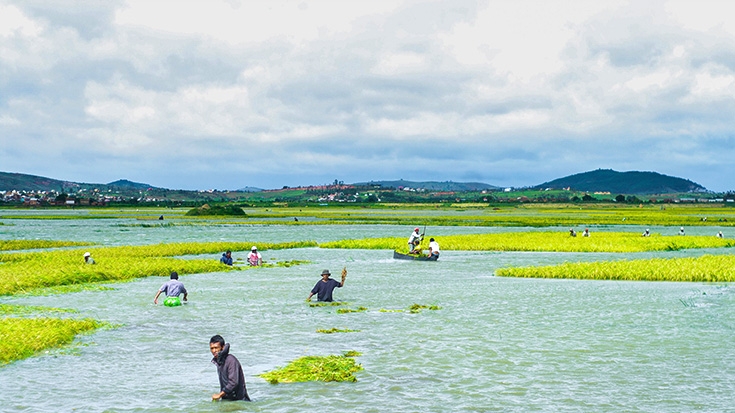As Malagasy authorities began to repair the damage inflicted by Chedza and Fundi, the Emergency Infrastructure Preservation and Vulnerability Reduction Project (PUPIRV) financed by the World Bank immediately released 400,000 dollars to implement emergency Cash for Work activities in severely impacted areas. Carried out by the Development Intervention Fund (Fonds d’Intervention pour le Développement or FID) under the leadership of the Government, these Cash for Work activities are targeting Antananarivo, Mahajanga (northeast), Morondava (west) and several localities in the southeast of the country such as Manakara, Farafangana, Vangaindrano and Vohipeno.
The creation of these labor-intensive activities will not only provide short-term income support to affected families, but will also rehabilitate areas ravaged by the storms. “The goal is to facilitate as soon as possible the return of normal living conditions to affected populations," says Ratsima Rasendra, Managing Director of FID. The Cash for work activities will directly benefit 4,050 households in 27 communities, half of which are female. Each beneficiary is required to work five hours per day over the course of 20 days, and receives in turn a daily wage of 3,000 ariary.
Not only do these work activities supply selected families with additional income to help them cope with this difficult situation, but they also constitute collective action to repair public infrastructure on behalf of their community. In the past, public works of this kind were successful in unclogging a canal blocked by garbage and vegetation, thus allowing for potable water to be pumped throughout various affected areas of the capital.
Tropical Storm Chedza also heavily damaged public infrastructure in other parts of the country. The United Nations Office for the Coordination of Humanitarian Affairs (OCHA) recorded damage to 969 classrooms and 44 health centers, as well as the destruction of eight health centers across the country. The resulting impact was felt by 48,000 students whose education was disrupted, and by local health services whose capacity to provide care significantly diminished.
While immediate needs are of concern, so are the medium-term impacts of the storm. Six roads have been damaged by the cyclone, hindering the movement of people and goods. According to the National Bureau of Risk Management and Disaster (BNGRC), 24,600 hectares of rice fields were flooded, putting a large volume of crops at risk.

